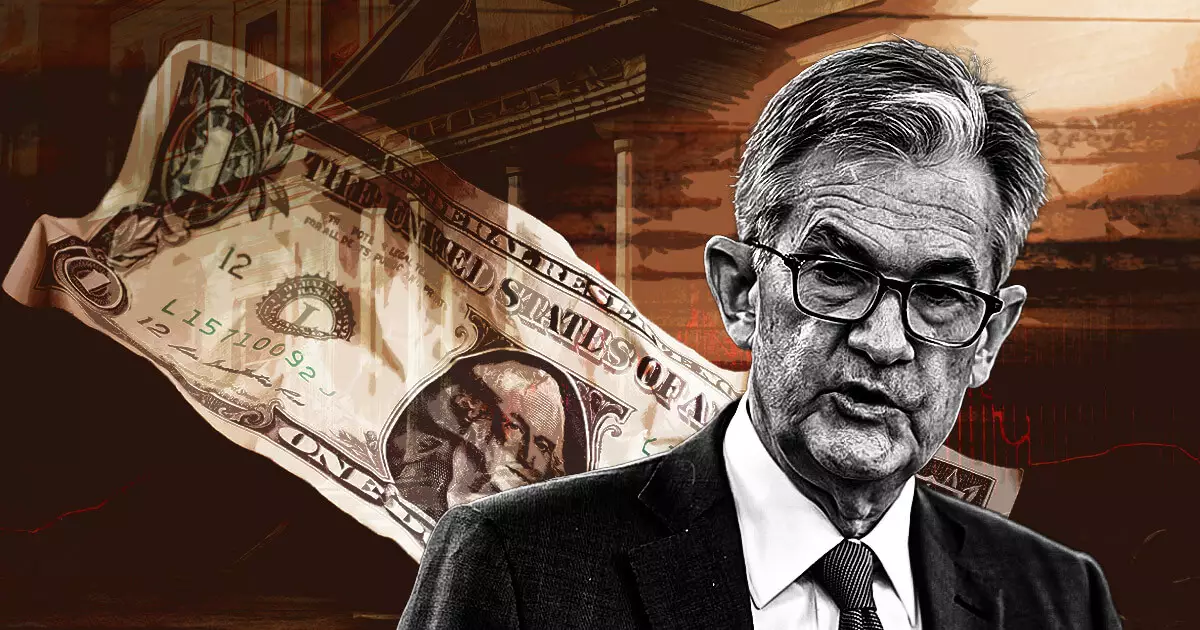In an era characterized by rapid digital transformation, the remarks by Federal Reserve Chair Jerome Powell regarding stablecoins mark a critical inflection point in the broader context of financial markets. His affirmation of the need for a regulatory framework for stablecoins signifies a recognition of their growing prominence in the economic landscape. The latest statistics are staggering, with stablecoins having exceeded $14 trillion in transfer volume last year, a figure that astoundingly eclipsed traditional giants like Visa. This development is not just anecdotal; it illustrates the shifting dynamics in how monetary exchange is conducted, raising the stakes for regulatory clarity.
Powell’s insights resonate in a climate where Congress is re-evaluating legislative efforts surrounding stablecoins. The emphasis on constructing a robust legal structure can’t be overstated. The idea of collaborating with Congress on regulations may have encountered roadblocks in the past, but Powell’s assertion that “the climate is changing” suggests a renewed momentum that could pave the way for more comprehensive oversight. If these regulations are executed thoughtfully, they could safeguard consumer interests while simultaneously enhancing the stability and transparency of these digital assets.
Consumer Protection Must Be Paramount
One critical aspect of Powell’s commentary is his insistence on the necessity of consumer protections within any proposed regulatory framework. This is not simply about establishing regulations for regulation’s sake; it’s an acknowledgment that as stablecoins gain traction, the potential risks to consumers could similarly rise. If history teaches us anything, it’s that a lack of regulation can leave consumers vulnerable, highlighting the importance of proactive measures to bolster trust and safety in an evolving financial system.
As the Fed considers relaxing some of the existing guidance for banks dealing with crypto-related activities, there is a palpable tension between innovation and safety. Powell’s cautious optimism emphasizes a balanced approach: promoting technological progress while ensuring that safeguards are not merely an afterthought but a fundamental component of any regulatory scheme. This balancing act is critical, as the potential for abuses within the crypto realm could unearth scandals reminiscent of the pre-2008 financial crisis.
Bridging Traditional Finance and Digital Assets
Critically, Powell’s address also touches on another compelling point—the integration of digital assets into traditional financial systems. He acknowledges the complexity involved, asserting that the path toward full-scale crypto integration is not devoid of challenges. The Fed’s conservative approach historically stems from an apprehension about the risks associated with rapid changes, and rightly so. However, as the dialogue around responsible innovation unfolds, it’s imperative for regulators to engage proactively with crypto businesses.
The Fed’s non-obstructionist stance toward banks servicing lawful crypto firms is a significant shift. It contradicts the narrative of isolation that has often characterized governmental attitudes toward digital currencies. The emphasis on allowing banks to engage in crypto custody, under clear parameters, could catalyze an evolutionary leap for how financial institutions interact with innovative technologies. This legislative optimism could redefine banking norms for a digital-first world, establishing a framework for how traditional finance can adapt to burgeoning sectors.
Historical Legislative Context
Moreover, the backdrop of ongoing legislative initiatives to govern stablecoins—like the GENIUS Act and the STABLE Act—underscores the urgency. It’s evident that congressional interest in formalized regulations is intensifying. Yet, without a coherent federal oversight mechanism, the current landscape remains fragmented and susceptible to predatory practices. A haphazard regulatory environment could give rise to confusion among consumers and foster an ecosystem ripe for fraud.
Thus, both the Fed and Congress have a shared responsibility to usher in a new era for stablecoin regulation, one that embodies pragmatism and strategic foresight. Historically, financial innovations have been met with regulatory skepticism, but the demand for a balanced, innovative, and responsible rulebook may finally create the conditions necessary for stablecoins to thrive in a secure and predictable environment.
A Call for Coalition
Ultimately, the interplay between regulatory compliance and technological advancement is delicate and multifaceted. Powell’s statements reflect an acknowledgment of the necessity for legislative frameworks that are not overly restrictive but rather enable growth while protecting consumers. As we stand on the brink of what could be a watershed moment for financial systems worldwide, collaboration across disciplines—lawmakers, financial experts, and technologists—will be vital.
In this transformative era of finance, stablecoins represent not just an opportunity for transactions but a chance to redefine how we view money itself. How effectively the Federal Reserve and Congress navigate this complicated landscape could very well serve as a blueprint for future technological innovations in finance. The conversations happening now are not merely regulatory dialogues; they represent foundational shifts that will influence economic engagement for generations to come.



















Leave a Reply